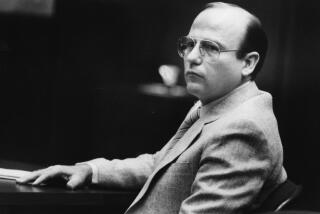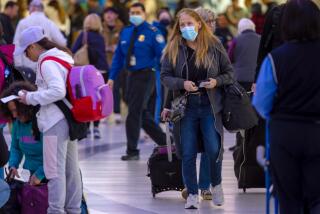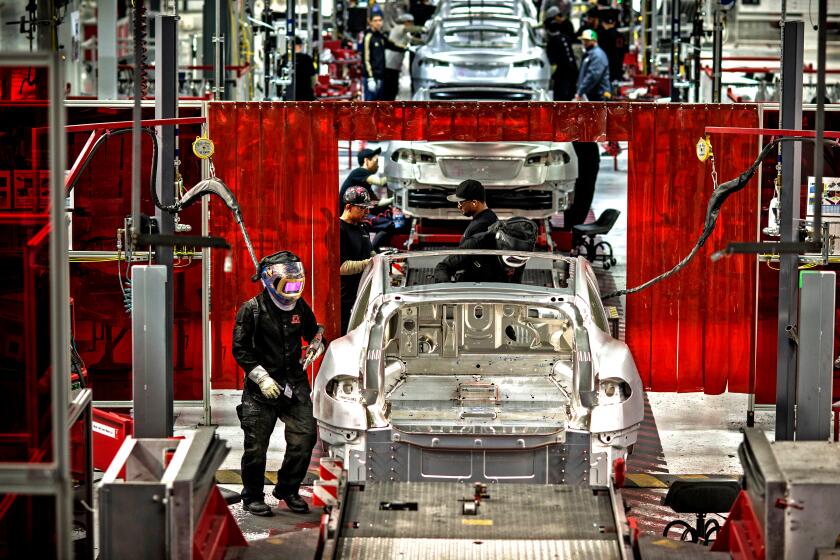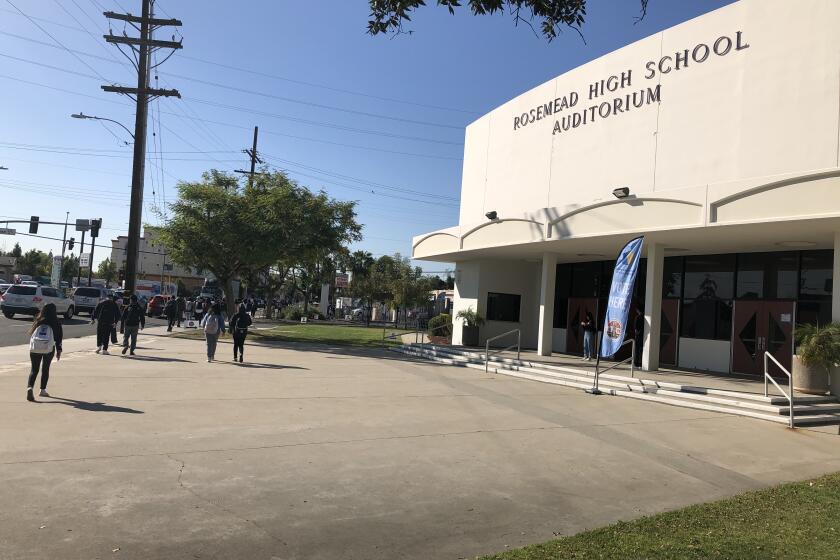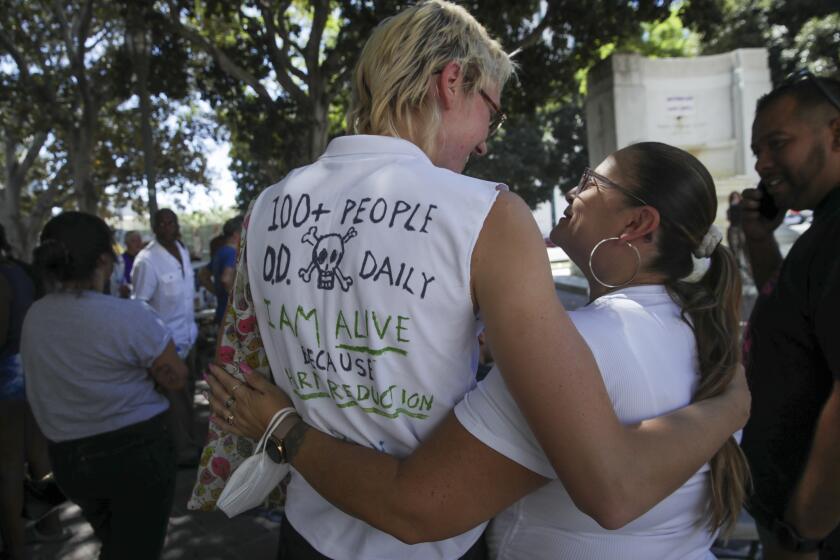Grass Waste From Other Side of County Line Not Greener
In the mounds of grass cuttings and wood chips at the base of a grove of Fillmore citrus trees, some items stick out like shark fins in a sea of brown.
Scraps of metal. Plastic detergent bottles. Doll parts. This is the detritus of suburban life that hides in residential recycling bins, buried by homeowners under a camouflage layer of clippings.
It’s increasingly showing up on farms across the county, in green waste shipped in from Los Angeles and Ventura County recycling bins and used as mulch. And after the plant matter has decomposed, all that remains is an eternal litter of indestructible plastic and metal.
But now, the county agricultural commissioner’s office and a committee of farmers are working to regulate green waste, drafting an ordinance with more stringent requirements on how it’s processed.
“There are farmers applying plastic bats and tennis balls and roller-skates” to their land, said Deputy Agricultural Commissioner Jim Fullmer. “It’s a crime for anyone who is genuinely concerned about agriculture.”
But there is more than just aesthetics at stake, Fullmer believes. Just three weeks ago, something even more odious found its way--apparently accidentally--into a Fillmore farmer’s green waste: oil drill mud, the compound that drillers use to lubricate drill bits, which then leaked into the Santa Clara River.
And equally worrisome to the office of the agricultural commissioner are other potential foreign elements--invisible ones. Fullmer fears that microscopic pathogens and devastating tree diseases like root rot and E. coli may be imported from over the county border to be spread on a rancher’s field.
Unlike compost, which has been heated to kill off toxins, green waste is for the most part unregulated by the state and requires no more processing after being removed from a recycling bin than that it be chipped. The state’s only requirement for green waste is that it be less than 10% contaminants, the kind of junk that sneaks into residential recycling bins.
Fullmer believes the stuff isn’t getting the scrutiny it should.
The committee’s work is a potential set of rules based on those already used by Caltrans for its erosion projects. It would require that the waste be chopped more finely, go through a heating process and contain only one-tenth of 1% contaminants.
Detractors say the rules will put a hardship on cities and make the process more expensive, dissuading farmers from using the recycled material, for fear the added expense could affect the bottom line.
Now, farmers typically get $15 for every ton they accept from cities, but that amount could go down.
A law passed a decade ago requiring cities to trim the amount of trash taken to landfills by 50% by this year transformed the trash business in California. Haulers, such as Harrison Industries in Ventura, began to branch into recycling to keep their rates down and meet the new legal standard. Cities pounced on recycling green waste as an inexpensive means of meeting the state’s requirements and getting organic waste to the farms.
About 37% of total trash recycled is yard waste, according to Bill Irwin, who runs Shoreline Organics, a composter in Oxnard that chips all the green waste from that city.
Cities need the farmers to accept their waste; otherwise, there is no market.
At this point, it can be a moneymaker for farmers, haulers and chippers, who typically take a fee from city agencies and others for agreeing to take the waste off their hands.
But Fullmer said he fears what the county’s farmers may be getting with their huge loads of clippings, which number 400 tons a week from Ventura alone, and about 100 to 150 tons a day--10 to 12 truckloads--from the city of Los Angeles.
Some farms are simply turning into junkyards, Fullmer says.
“There’s no problem with using green waste,” he said. But “all [the county Solid Waste Management Department] cares about is the diversion from the landfill. They don’t [care] about the quality of the materials.”
Solid Waste Department Director Kay Martin said the arguments for the regulations are agricultural snobbery.
“Frankly, I think the concerns grew out of this notion that urban areas ought to take care of their own materials,” Martin said. “It’s urban versus agriculture. Should we require that everything be processed and sanitized before it leaves the urban areas?”
Martin also said she thinks the regulations are aimed at making farmland more aesthetically pleasing. It boils down to a belief that if consumers and others think that Ventura County is spreading trash on its land, they won’t buy its produce, she said.
But the trash that finds its way onto fields is not harmful, most agree.
“Personally, I think it’s appropriate, though it’s uglier than sin,” said Terry Gilday, manager of the solid waste local enforcement agency of the state Department of Environmental Health.
*
But Gilday concedes that there is no way of knowing exactly what goes into suburban refuse bins. A homeowner buys an infected plant from a nursery. She plants it. It dies, and she tosses it into her green waste bin. Has she just dumped thousands of disease spores into one of Ventura County’s farms?
“It’s always possible,” Gilday said. “That green waste barrel sits in your yard there. While you and I might be careful, there are some people who aren’t. Who’s to know?”
Jim Downer, a farm advisor who has done experiments on the use of mulch, said the only sure way to avoid the spread of pathogens is composting, a more expensive and time-consuming process during which the waste is heated over a long period of time until it becomes a soil-like substance.
“Most of it has to do with economics and doing something good for crops,” Downer said. “But [farmers are] businessmen. If it gets too expensive, they won’t do it.”
And that worries Fullmer.
“We have some success in applications and some horrible, horrible applications,” he said.
The process can be done right. Many chippers--who make their living as the middlemen between city waste disposal and farmers--do a good job of removing foreign objects and providing clean waste, Fullmer said.
But Fullmer also said none of the waste he sees coming from Los Angeles rubbish services is appropriate for agriculture here and that some farmers--such as the Fillmore rancher who spread toxins on his land--are duped into taking dirty yard waste.
Martin of the Solid Waste Department conceded that there have been abuses by Los Angeles firms, in particular a recent very dirty batch from the Bradley landfill in Sun Valley.
“It was just a mess, and it was that load that got everybody excited again,” she said. But “it was very much an isolated incident. [Los Angeles] has a very clean program and a very clean product.”
Fullmer said there are several county farmers who accepted green waste at $15 a ton and applied it in vast piles over their fields and orchards. At one ranch, plastic bags have caught in the bottom of the trees and slivers of trash poke from piles.
“It’s nothing more than a dump,” he said as he surveyed the land.
*
An ordinance could solve that problem if approved by the Board of Supervisors, Fullmer believes. He wants ranchers to face penalties for accepting very dirty waste.
“This may make it more expensive for the city of Los Angeles,” Fullmer said. “But they have to get rid of green waste, even if it costs them a little more. Ventura County has always been a leader in agriculture. We try and face the problems.”
More to Read
Start your day right
Sign up for Essential California for news, features and recommendations from the L.A. Times and beyond in your inbox six days a week.
You may occasionally receive promotional content from the Los Angeles Times.
